MORE NOISE: Israeli police armed with rifles that can fire “rubber bullets” cleared the temple grounds with the famous Rock Mosque and the al-Aqsa Mosque. Photo: Mahmoud Illean / AP
––
JERUSALEM (VG) The flags waved as tens of thousands gathered today for Friday prayers at the al-Aqsa Mosque. Despite a ceasefire, there were new clashes with Israeli police.
Just updated
–
Two weeks ago, Israeli riot police clashed with Palestinian protesters after Friday prayers at the end of the fasting month of Ramadan. The rage that was ignited at the Palestinian holy mosque, triggered 11 days of war between Hamas and Israel.
But today, thousands of Muslims were once again free to go up to pray, without being limited by the large presence of Israeli security forces.
When Friday prayers were over, new clashes broke out.
According to an Israeli police spokesman, hundreds of “stones and petrol bombs” were thrown at security forces. Palestinian health personnel report that 15 people needed treatment afterwards, writes NTB.
Background: The spark that ignited everything
Security
Yesterday came ceasefire after the recent deadly outbreak of war between Hamas in Gaza and Israel.
The complex where the al-Aqsa Mosque and the Rock Mosque (Rock Dome) are located is Sunni Islam’s third holiest site, but in about the same place is Judaism’s holiest site, the Wailing Wall (West Wall).
The Temple Mount is one of the most controversial religious sites in the world, and since the Israeli occupation of East Jerusalem in 1967 has been a symbol of the conflict between Israel and Palestine.
Today, young Jewish Orthodox boys slalomed among Arab Muslims who hurried to Friday prayers in the al-Aqsa Mosque – a sight one would hardly see during recent weeks’ unrest, according to local residents of East Jerusalem’s Old City.
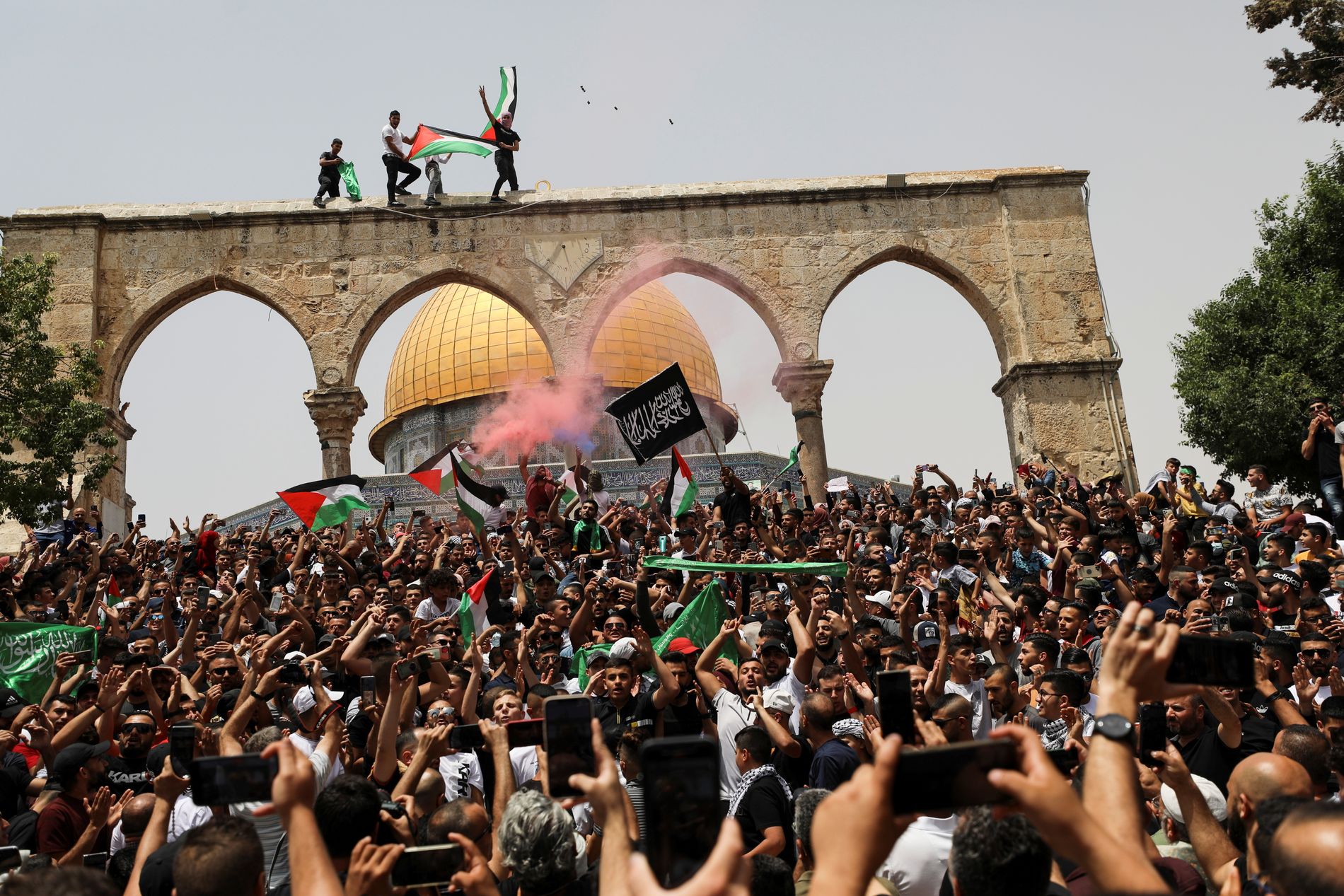 —-
—-CELEBRATION: Palestinian and Hamas flags flown in the air during Friday prayers today at the al-Aqsa Mosque. Western journalists were not given access. Foto: AMMAR AWAD / X90085
––
Things are about to normalize in the very tense city.
But at the main entrance up to the Temple Mount, Israeli police stand and deny journalists and other unauthorized access.
This is as far as we get.
– The war destroys
Right at the main entrance to the Temple Mount, Samirh Sawar (51) has been selling bread for over 30 years, as his father did before him.
– I felt so bad. It’s about religion, not politics. If I want to come in to pray, then I have to go in to pray, but when I was not allowed, it was very heavy, he says to VG.
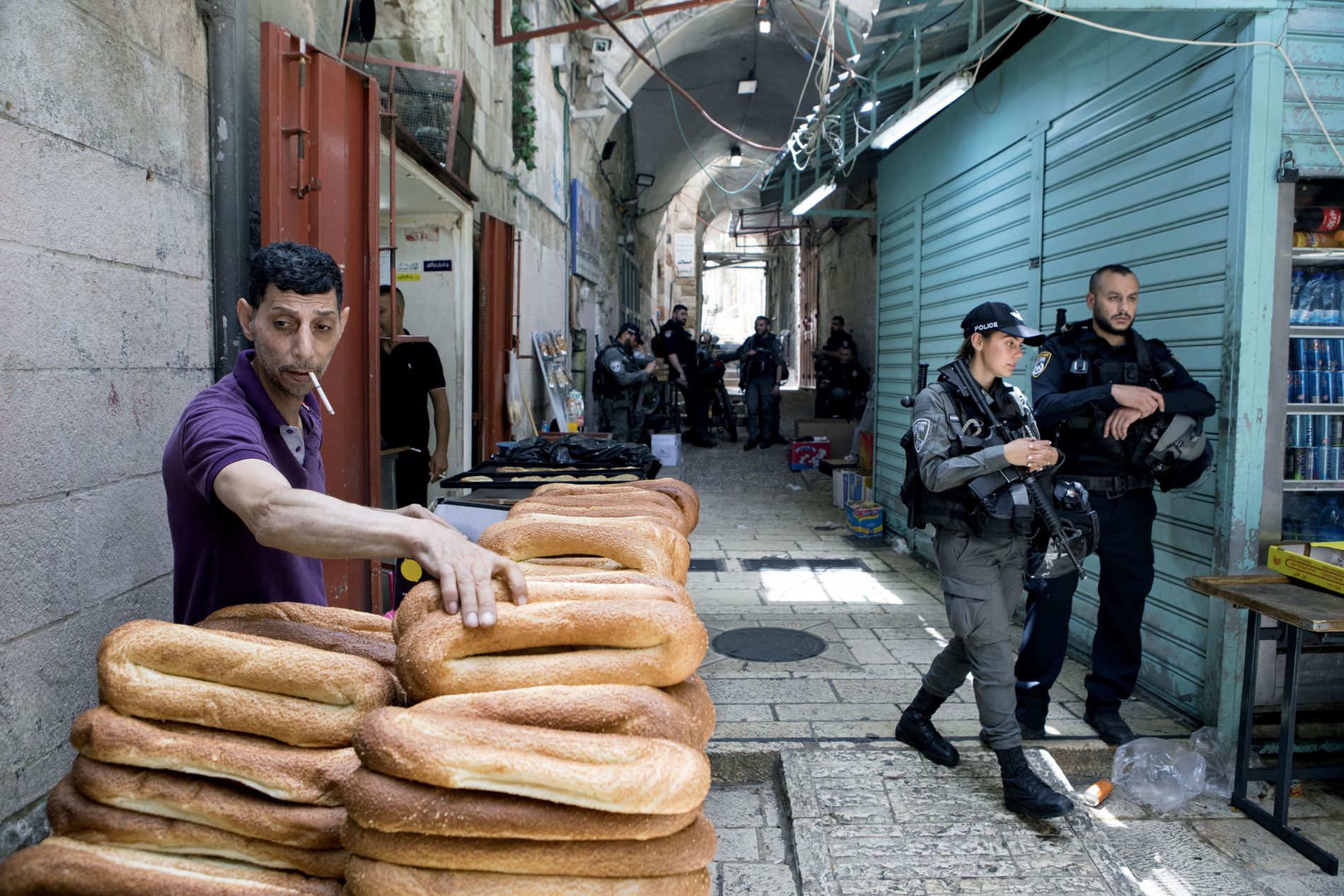 —-
—-BREAD SELLER: Samirh Sawaf (51) has been selling bread at the entrance to the al Aqsa Mosque for 30 years. Every Friday he sees thousands of streams pass by in the narrow streets and up to the height of the temple. Photo: Thomas Nilsson / VG
––
– The war stops the work. Then there are no shops anymore.
– Does it feel different today compared to the Friday prayer last week?
– Right now it feels quite the same as it has been, but in a week or ten days I think we will return to normal, he answers.
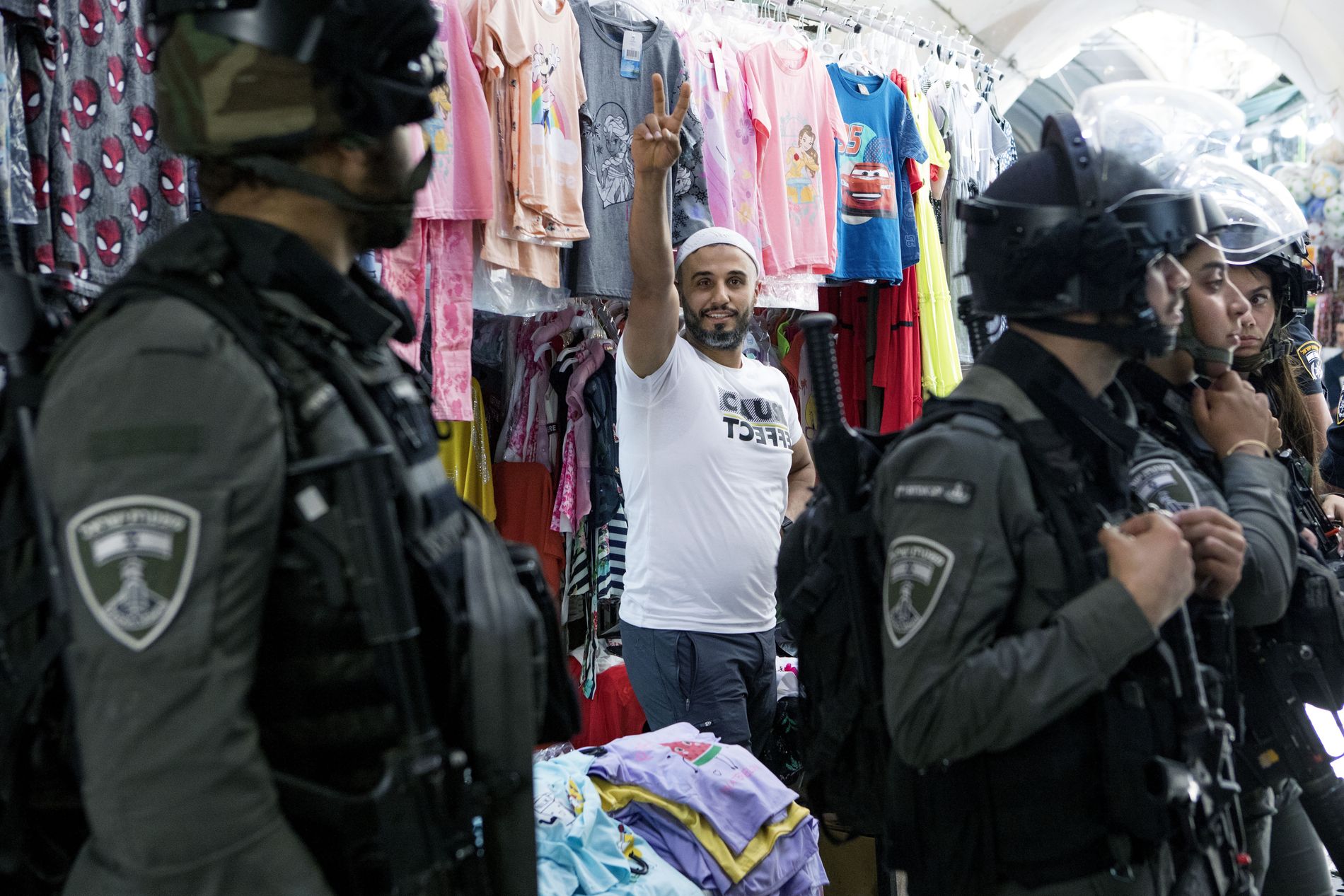 —-
—-V-SIGN: Moath Aljuni tells VG that he moves as normal and fears nothing. Israeli police forces were very visible in the old city, but to a lesser extent than they have been in recent weeks. Photo: Thomas Nilsson / VG
––
Spread from neighborhoods
Although the conflict between Arabs and Jews in Israel, in Gaza and in the West Bank has a multifaceted historical backdrop, this time it started in a neighborhood just over two kilometers from the Temple Mount in Jerusalem’s Old City.
Sheikh Jarrah is a small area in East Jerusalem dominated by Arabs. Here, in mid-April, it became clear that four Palestinian families risked losing their homes to Israeli settlers, depending on the outcome of a lawsuit.
 —-
—-CHILDREN: A little girl walked with her mother through the Old City of East Jerusalem before the start of Friday prayers. Photo: Thomas Nilsson / VG
––
Clashes between Palestinian protesters and Israeli forces spread through Jerusalem.
When they reached the al Aqsa Mosque and when Israeli forces did not withdraw, the rockets began coming from Gaza and the militant organization Hamas.
Israel responded with its own bomber.
US President Joe Biden emphasized Israel’s right to defend itself, while increasing international pressure for a ceasefire.
According to the Hamas-controlled health ministry, at least 243 Palestinians, including 66 children, were killed during the 11 days of the Israeli attacks. On the Israeli side, twelve have died.
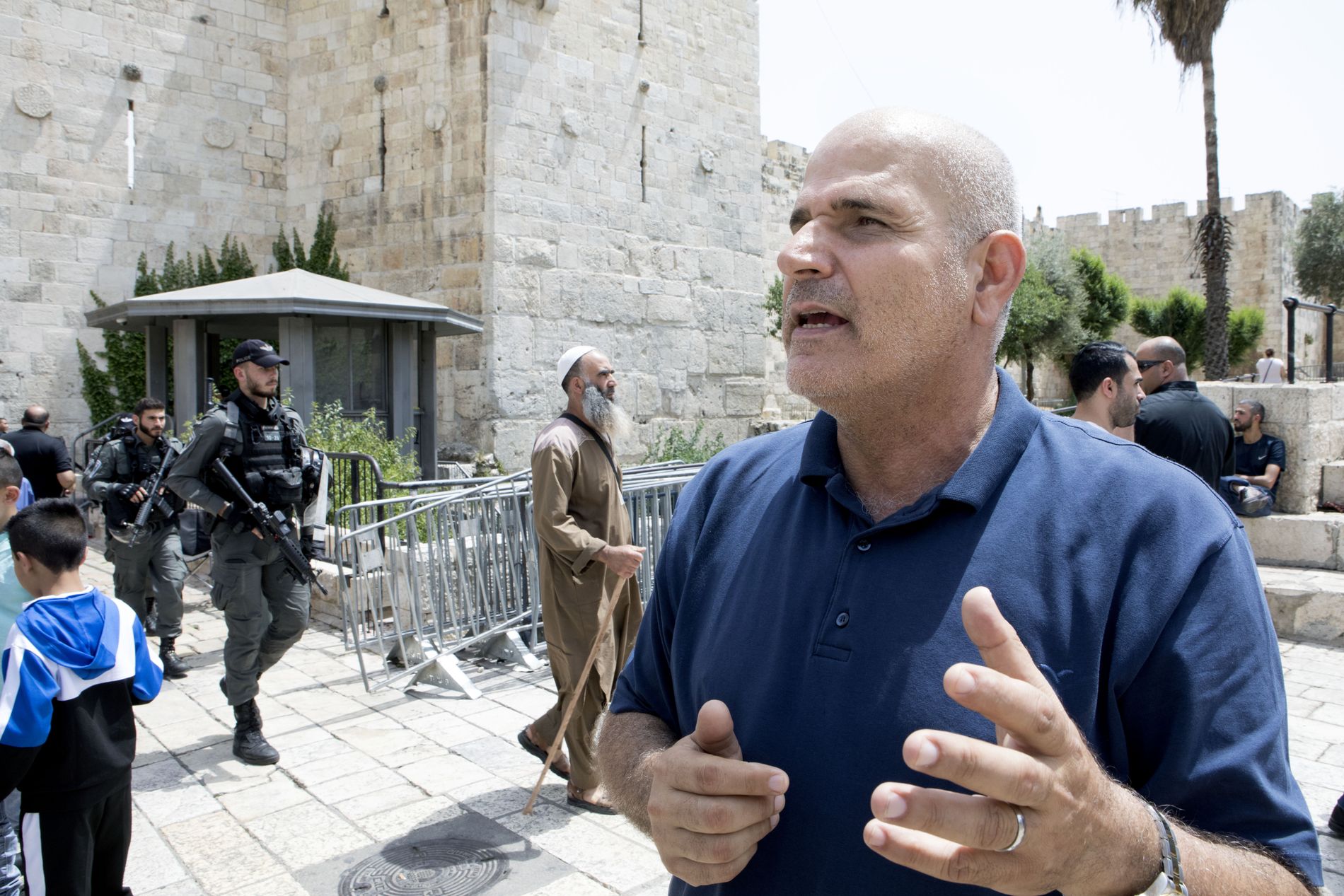 —-
—-DISAPPOINTED: Kaled Geth thinks many were disappointed with a passive speech from the imam before Friday prayers where tens of thousands were gathered after the ceasefire that came into force yesterday. Photo: Thomas Nilsson / VG
––
Disappointed with speech before Friday prayer
Outside the Damascus Gate, one of the busiest entrances to Jerusalem’s Old City, people are pouring out after Friday prayers.
Here it was also previously suspended by Israeli police in response to riots.
Some show the V sign for “victory”. Others were disappointed with the speech before Friday prayers.
– Everyone was disappointed with the al-Aqsa speaker, because his speech was far from Palestine as a context, our religion and he was far our problems. He was just talking about general things. People were angry with him, says Kaled Geth, who VG meets at the Damascus gate.
– What would people hear about?
“They wanted to hear about Sheikh Jarrah, they wanted to hear about the gate of Damascus, they wanted to hear about Jerusalem,” he replies.
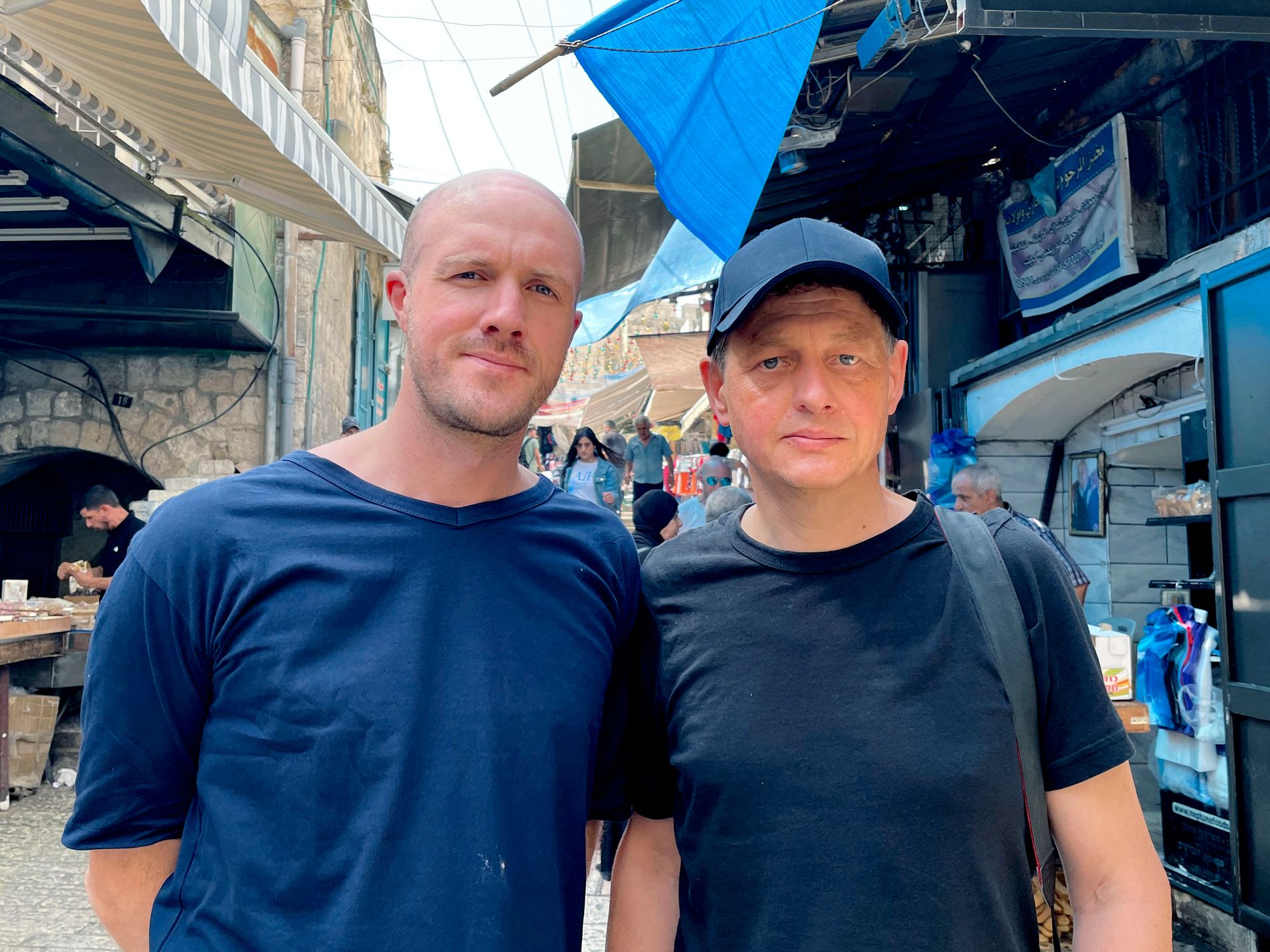 —-
—-VG’s team in Israel: Journalist Erlend Ofte Arntsen and photographer Thomas Nilsson. Photo: Thomas Nilsson / VG
––
–


